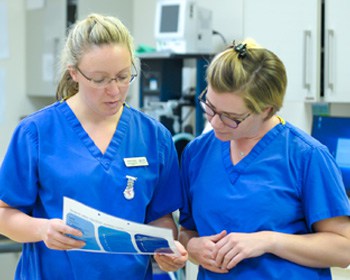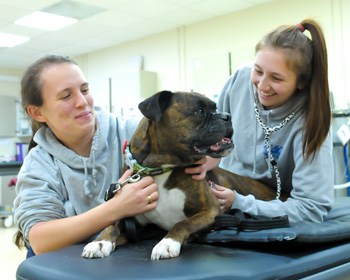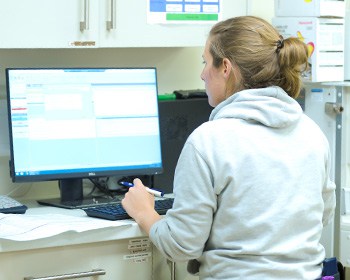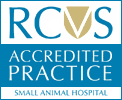Your pet’s journey
At Cave Veterinary Specialists we have a team of dedicated veterinary anaesthetists who have specialist training in veterinary anaesthesia and analgesia. They are directly involved in every sedation and anaesthetic procedure performed in the hospital. Clinicians regularly discuss cases, review recent literature and best practice, both at Cave Veterinary Specialists and with other anaesthesia departments across the group. We continually strive for the best care of each animal within the hospital.

Before your visit
Many animals seen at Cave Veterinary Specialists require sedation or general anaesthesia as part of their diagnostic investigations or treatment. It is common that we will request your pet to be fasted prior to your visit, usually, water can be provided until the time of your consultation.
During your visit
If your pet requires sedation or general anaesthesia, your consulting clinician will explain this, and any specific risks this might pose. We will not sedate or anaesthetise your pet for any procedures without your informed consent. A member of the anaesthesia team is always available to discuss your pets anaesthetic if that is what you would like.
Once your pet is admitted
Each animal undergoing sedation or anaesthesia is examined by one of our anaesthetists. The anaesthetist devises a plan specifically for your pet, considering their medical history, current condition, demeanour and the procedure to be performed. Cats are taken directly to our separate cat ward and allowed time to acclimatise before any further examinations or procedures are performed.
Sedation versus General Anaesthesia
 Sedation involves administering drugs to calm and relax your pet. They remain conscious but not stressed. This allows us to perform non painful procedures such as ultrasound or x-rays safely.
Sedation involves administering drugs to calm and relax your pet. They remain conscious but not stressed. This allows us to perform non painful procedures such as ultrasound or x-rays safely.
General anaesthesia involves the loss of consciousness so your pet is unaware of their surroundings, this is used for surgical procedures or nonpainful imaging where sedation is not sufficient, such as an MRI scan. All animals will have a venous cannula placed, usually in a vein on one of their legs, this allows us to give drugs and fluids to your pet to support them through their procedures.
During the procedure
Throughout sedation and general anaesthesia your pet is continuously monitored by one of our experienced veterinary nurses under the supervision of a veterinary anaesthetist. Very complex or critical cases will have continuous monitoring
from both a veterinary anaesthetist and an experienced nurse. We are fortunate at Cave Veterinary Specialists that we have a large team of anaesthetists which allows one-on-one care when required.
We have a range of monitoring techniques available in each clinical room for every case sedated or anaesthetised.
The anaesthetist decides what monitoring is appropriate to use for each case but can include;
- Oxygen saturation
- Electrocardiography
- Expired carbon dioxide and anaesthetic vapour concentration
- Body temperature
- Blood pressure - non-invasive with an inflatable cuff or direct blood pressure measurement for some surgical cases
- Blood glucose and electrolytes if indicated.
Some procedures will also have a local anaesthetic block performed by the anaesthetist. This sometimes involves clipping some hair off the area to allow us to sterilise the skin. Before your pet recovers from their sedation or general anaesthesia, the nurse, anaesthetist and clinician make a plan for your pet’s ongoing care including pain relief, fluid therapy, antibiotics, feeding, physiotherapy and any particular monitoring or other care required for your individual animal.

After anaesthesia
All animals are monitored closely as they recover from sedation or general anaesthesia by a veterinary nurse and animal care assistant in charge of our recovery kennels. If they are going home the same day, once they are completely awake their venous cannula will be removed before being discharged to you. If they are staying in the hospital once they are completely awake, they are handed over to the care of our ward’s nurses.
Out-of-hours anaesthesia
We have an anaesthetist on call 24 hours a day, 7 days a week. The on-call anaesthetist is contacted to give advice on pain relief or other aspects of care for our inpatients and to sedate or anaesthetise any emergency cases that require it overnight or at weekends. Any cases seen out of hours will receive the same level of care as those seen during normal working hours.




